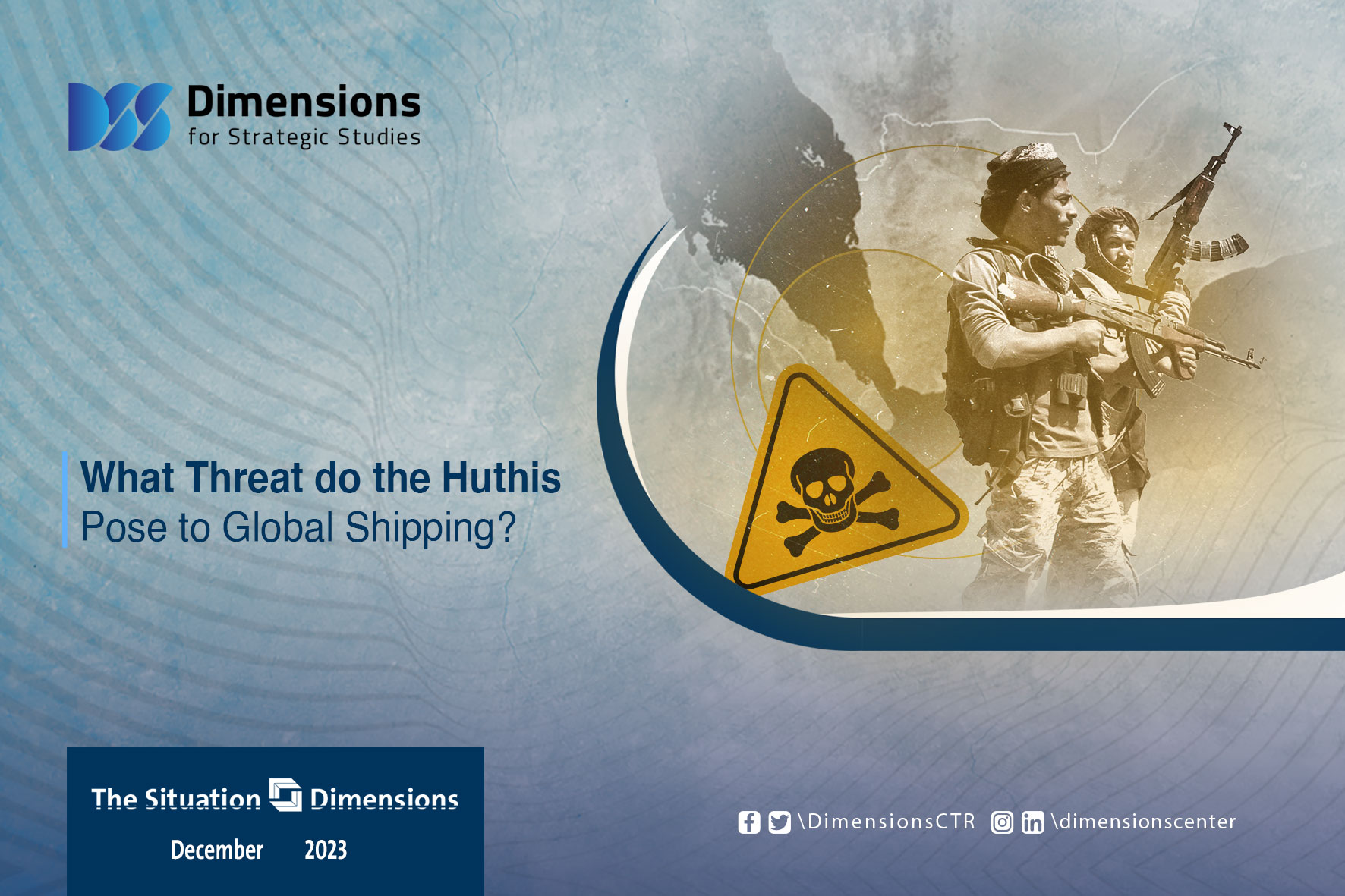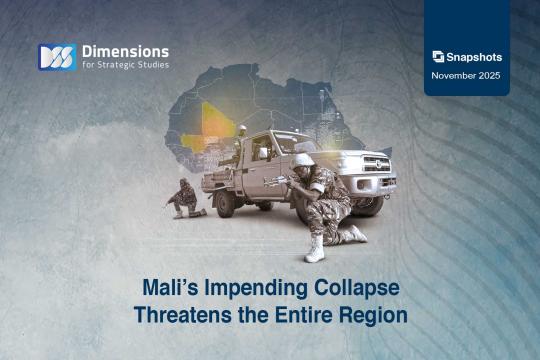
What Threat do the Huthis Pose to Global Shipping?
2023-12-062117 view
Three merchant ships passing through the Bab al-Mandeb Strait between the Red Sea and the Gulf of Aden have reported being damaged in recent days, in attacks launched from Yemen. The United States also announced on December 3 that three commercial vessels, traveling separately in international waters south of the Red Sea, had been attacked in four incidents. Washington said an American destroyer had shot down three drones in response to distress calls from the ships during the attacks.
These reports came after Yemen’s Huthi rebels announced that they had targeted two Israeli ships in the Strait, a strategically vital shipping lane linking the Mediterranean and Europe to the Indian Ocean and Asia.
Various factors cast doubts over the Huthis’ claims. The three ships were carrying the flags of either Panama or the Bahamas, and some media reported that the vessel carrying that of the Bahamas was British-owned. Israel denied any connection to the ships. The Huthis had announced last month a separate hijacking of an Israeli ship, but Israel said this vessel was owned by a British company and operated by a Japanese one, and that no Israeli sailors were on board.
Muammar Al-Eryani, Minister of Information in the Aden-based Yemeni government, confirmed that the hijacked ship was the “Galaxy Leader” vehicle carrier, operated by Japanese firm “Nippon Yusen”. He added that it had been hijacked while sailing in international waters near Yemen’s Red Sea coast, on a regular commercial voyage between Turkey and India. Its sailors were mainly Turkish. This aligns with Israeli statements on the affair, and piled more dobt on the Huthi narrative.
The Limits of the Huthi Threat
Despite the Huthis’ military capabilities and the threat they are able to pose by targeting commercial shipping, their clout also has limits. For a start, cargo ships are moving targets, which travel at speeds of up to 40 kilometers (25 miles) per hour.
This limits the Huthis’ options for targeting them with regular weapons. According to military experts, most Huthi drones are small and not suited to large-scale attacks. They also use GPS to identify targets, which limits their capacity to hit moving targets. If ships turn off their transmitters and follow a zigzag course, they can only be detected and targeted by constant surveillance and visual contact.
Moreover, commercial ships that pass through the Red Sea are designed to withstand severe storms and to continue sailing even after sustaining damage. Firing missiles at shipping would be the most dangerous option available to the Huthis, but it would also be highly inaccurate.
Reviving Old Threats: Kidnapping and Piracy
Hijacking a ship is a complex operation that requires precise intelligence and careful monitoring over a long period, yet it continues to represent one of the main threats to commercial shipping. It has been used for centuries in the Red Sea by a variety of pirate groups.
The adoption of this strategy by the Huthis, a key Iranian proxy in a strategically sensitive location, multiplies the threat to shipping. However, it appears that the Huthis are carrying out such operations largely for propaganda purposes, in keeping with Iran’s regional agenda in light of the Israeli war on Gaza. The centrality of propaganda to this strategy is clear from the way pro-Huthi media outlets and elites have portrayed these attacks as “acts of resistance” in support of Gaza.
Moreover, Iran’s rulers want to implement a carefully calculated regional escalation against the US, in coordination with their proxies in Syria and Iraq, to establish Tehran as an actor that must be taken seriously and is able to challenge US hegemony in the region. This strategy aims to win leverage in any future Iranian-American negotiations or understandings on their many points of contention.
That said, these attacks are likely to impact the maritime shipping sector. Cargo costs may well surge due to the increased cost of shipping insurance - or of fuel, as ships switch to safer but longer routes.
Recent Huthi attacks are reminiscent of the group’s many attacks on Saudi ships and oil tankers between 2015 and 2018. These operations repeatedly forced Saudi Arabia to suspend sea-bound crude oil exports through Bab al-Mandeb. However Huthi attacks of this nature are unlikely to resume at this frequency and intensity in the current context. The previous wave of attacks peaked when the Huthis were at the height of their conflict with the Saudi-led coalition in Yemen. Today, a truce is largely holding in Yemen even though its terms formally expired in October 2022, and Saudi Arabia and Iran have made efforts towards regional de-escalation. The region is however seeing a limited and calculated escalation between Tehran and Washington, where the Biden administration has largely been inclined to seek diplomatic solutions with Iran.
On the other hand, Biden’s strategy has been criticized by many in American politics, who accuse the administration of failing to respond forcefully enough to the Huthis. These criticisms can be seen in the context of the partisan divide in US politics, which is intensifying in the run-up to the 2024 presidential elections.





